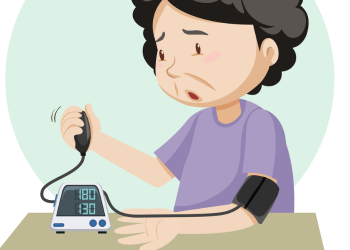
Influenza can be prevented and treated successfully with homeopathic medicines
Influenza, commonly known as the flu, is an infectious disease caused by influenza viruses. Symptoms range from mild to severe and often include fever, runny nose, sore throat, muscle pain, headache, coughing, and fatigue. These symptoms begin one to four days after exposure to the virus and last for about two to eight days. Influenza may progress to pneumonia from the virus or a subsequent bacterial infection. Other complications include acute respiratory distress syndrome, meningitis, encephalitis, and worsening of pre-existing health problems such as asthma and cardiovascular disease.
There are four types of influenza virus: types A, B, C, and D. In humans, influenza viruses are primarily transmitted through respiratory droplets from coughing and sneezing. Transmission through aerosols and surfaces contaminated by the virus also occurs.
Frequent hand washing and covering the mouth and nose when coughing and sneezing reduce transmission, as does wearing a mask. Influenza infection is diagnosed with laboratory methods such as antigen and antibody tests and a polymerase chain reaction (PCR)to identify viral nucleic acid. in healthy individuals, influenza is typically self-limiting and rarely fatal.
Signs and symptoms
Flu, also called influenza, is an infection of the nose, throat, and lungs
Symptoms of the flu, such as a sore throat and a runny or stuffy nose, feeling very tired, sweating, and chills, are common.The onset of symptoms is sudden, and initial symptoms are predominantly nonspecific, including fever, chills, muscle pain, malaise, loss of appetite, lack of energy, and confusion. The time between exposure to the virus and development of symptoms is one to four days, most commonly one to two days. These are usually accompanied by respiratory symptoms such as a dry cough, sore or dry throat, hoarse voice. Cough is the most common symptom. Gastrointestinal symptoms, including nausea, vomiting, and diarrhea, are especially common in children. The standard influenza symptoms typically last for two to eight days.
Symptomatic infections are usually mild and limited to the upper respiratory tract, but progression to pneumonia is relatively common. Pneumonia may be caused by a primary viral infection or a secondary bacterial infection. Primary pneumonia is characterized by rapid progression of fever, cough, labored breathing, and low oxygen levels. Secondary pneumonia typically has a period of improvement in symptoms for one to three weeks, followed by recurrent fever, sputum production, and fluid buildup in the lungs, but it can also occur just a few days after influenza symptoms appear.
In children, these symptoms may show up more generally as being fussy or irritable. Children are also more likely than adults to have ear pain, feel sick to the stomach, vomit, or have diarrhea with the flu.
In some cases, people have eye pain, watery eyes, or find that light hurts their eyes.
COMPLICATIONS
Acute respiratory distress syndrome.
Toxic shock syndrome.
Worsening of a chronic illness
PREVENTION
Clean hands with water for at least 20 seconds.
Avoid touching your face.
Cough or sneeze into a tissue or your elbow. Then wash your hands. Regularly clean often-touched surfaces to prevent the spread of infection.
By avoiding crowds during peak flu season, you lower your chances of infection.
FAQs
Is influenza very serious?
Most people recover from fever and other symptoms within a week without requiring medical attention. However, influenza can cause severe illness or death, especially in people at high risk. Influenza can worsen symptoms of other chronic diseases. In severe cases, influenza can lead to pneumonia and sepsis
How long does influenza last?
Most symptoms go away in 4 to 7 days. The cough and tired feeling may last for weeks. Sometimes, the fever comes back
What to eat for the flu?
Eat fruits and vegetables that are high in vitamin C Vitamin C boosts your immune system, which is how your body naturally fights off infection. If you're feeling nauseous, follow the BRAT diet – bananas, rice, apples, and toast.
HOMEOPATHIC MEDICINE
Influenzinum
Eupatorium perfoliatum
Rhus tox






















